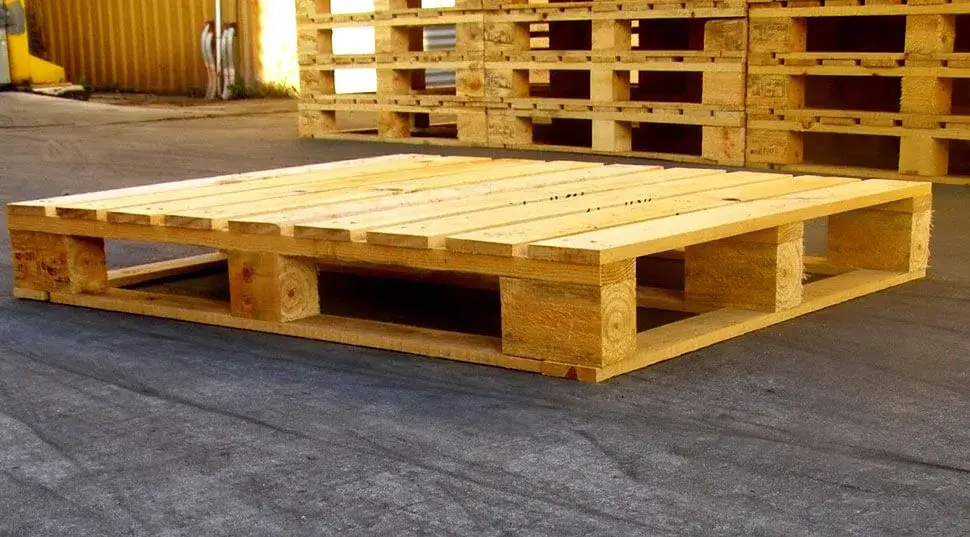How Much Weight Can a Pallet Hold? A Guide for Steel Manufacturers on Load Capacities and Best Practices
In the dynamic landscape of steel manufacturing, the efficiency and safety of material handling processes are paramount. Underpinning these processes is a fundamental question: How much weight can a pallet hold? This comprehensive guide, crafted by Chesapeake Pallets, USA, a leading name in the pallet and logistics industry, offers steel manufacturers insights into load capacities and best practices. Drawing on Chesapeake Pallets’ expertise, this guide delves into critical considerations for steel manufacturers, providing a nuanced understanding of pallet load capacities and outlining strategic approaches to optimize the handling and transportation of steel products.
Also Read: How Much Weight Can a Pallet Hold?
1. Pallet Load Capacity Basics: Chesapeake Pallets initiates the guide by establishing the foundational knowledge of pallet load capacities. It emphasizes the distinction between static and dynamic load capacities—the maximum weight a pallet can support when stationary and in motion, respectively. This foundational understanding is crucial for steel manufacturers to make informed decisions regarding pallet selection based on the weight and dimensions of their steel products.
2. Consideration of Pallet Types: Different pallet types possess varying load capacities, and Chesapeake Pallets directs steel manufacturers to carefully choose the right pallet for their unique needs. Whether it’s stringer pallets, block pallets, or double-faced pallets, each type caters to specific load-bearing requirements. Chesapeake Pallets advises steel manufacturers to align pallet types with the weight of their steel products to ensure optimal load capacity and efficiency.
3. Pallet Material and Construction: The material and construction of pallets significantly impact their load capacities, and Chesapeake Pallets guides steel manufacturers through the decision-making process. Wood, plastic, and metal pallets each offer distinct advantages. Chesapeake Pallets highlights the strength and cost-effectiveness of wooden pallets, the durability and moisture resistance of plastic pallets, and the robust support provided by metal pallets. Steel manufacturers are urged to assess the material and construction of pallets meticulously to match the load-bearing requirements of their steel products.
4. Rack Systems and Pallet Racking: For steel manufacturers employing pallet racking systems in their warehouses, Chesapeake Pallets emphasizes the interplay between pallets and racks. Pallet racking systems come with specific weight capacities per level or per bay, and Chesapeake Pallets advises steel manufacturers to consider both individual pallet capacities and the load-bearing capacity of the racking system to prevent overloading. Regular inspections and adherence to guidelines contribute to a safe and efficient storage environment.
5. Uniformly Distributing Weight: Proper weight distribution on a pallet is a key practice highlighted by Chesapeake Pallets to maximize load capacity. Steel manufacturers are encouraged to ensure even weight distribution across the pallet surface to prevent imbalances that may affect the stability of the load. This not only optimizes individual pallet load capacities but also contributes to a safer material handling process.
6. Compliance with Industry Standards: Chesapeake Pallets underscores the importance of aligning pallet usage with industry standards and regulations. Organizations such as the International Organization for Standardization (ISO) and the National Wooden Pallet and Container Association (NWPCA) provide guidelines on pallet specifications and load capacities. Adhering to these standards ensures that pallets meet safety requirements and perform optimally in the steel manufacturing environment.
7. Regular Maintenance and Inspection: To guarantee the ongoing reliability of pallets, Chesapeake Pallets advocates for regular maintenance and inspection routines. Damaged or weakened pallets compromise load capacities and pose safety risks. Visual inspections, timely repairs, and the replacement of pallets that no longer meet load capacity requirements contribute to a well-maintained and efficient material handling system.
8. Custom Solutions for Specialized Loads: Chesapeake Pallets recognizes that in some cases, standard pallets may not meet specific load requirements. The guide encourages steel manufacturers to explore custom pallet solutions, tailoring designs to accommodate the dimensions and weight distribution of unique steel products. Collaboration with pallet manufacturers allows for the creation of customized solutions that align with the distinct needs of the steel manufacturing process.
9. Employee Training on Load Limits: Chesapeake Pallets emphasizes the need for comprehensive training programs to ensure that warehouse personnel are well-versed in load limits and pallet capacities. Steel manufacturers are urged to provide training that educates employees on the load capacities of different pallet types, proper stacking techniques, and the importance of adhering to weight restrictions. This knowledge empowers workers to make informed decisions during the loading and unloading processes.
10. Collaboration with Pallet Suppliers: Chesapeake Pallets suggests a collaborative relationship with pallet suppliers as a strategic approach for steel manufacturers seeking to optimize load capacities. Pallet suppliers can offer expertise on the load-bearing capabilities of their products and provide tailored solutions based on the specific requirements of steel manufacturing. Regular communication ensures that steel manufacturers stay informed about advancements in pallet technology and can make informed decisions to enhance their material handling processes.
In conclusion, Chesapeake Pallets, USA, through this guide, provides steel manufacturers with a comprehensive roadmap for understanding pallet load capacities and implementing best practices. With a focus on foundational knowledge, pallet types, material considerations, rack systems, weight distribution, compliance with standards, maintenance, custom solutions, employee training, and collaboration with pallet suppliers, Chesapeake Pallets empowers steel manufacturers to optimize their material handling operations. This guide serves as a valuable resource for steel manufacturers striving for efficiency, safety, and excellence in the dynamic landscape of steel manufacturing.






